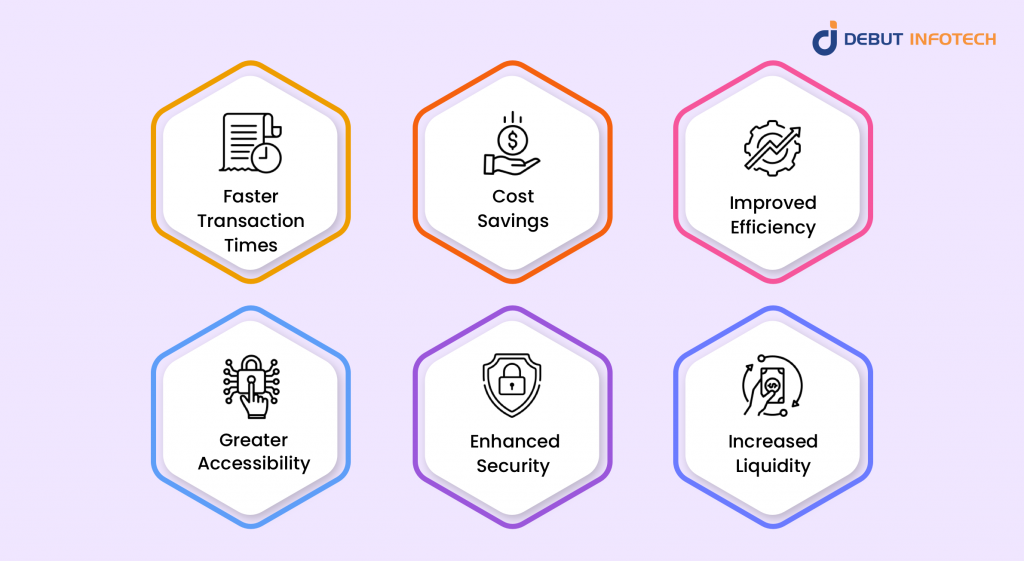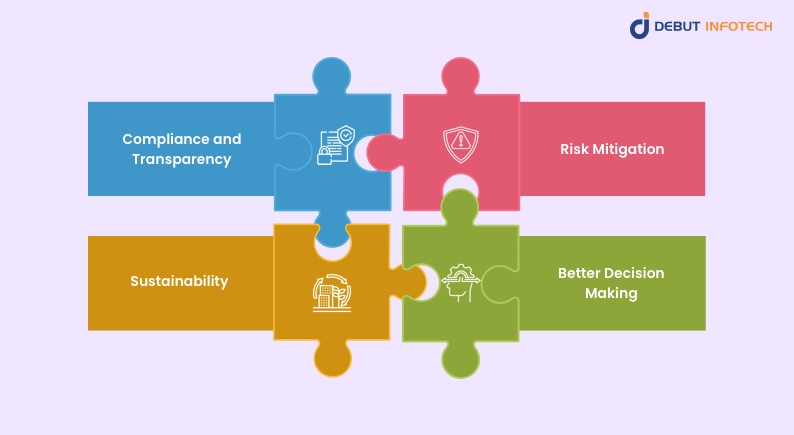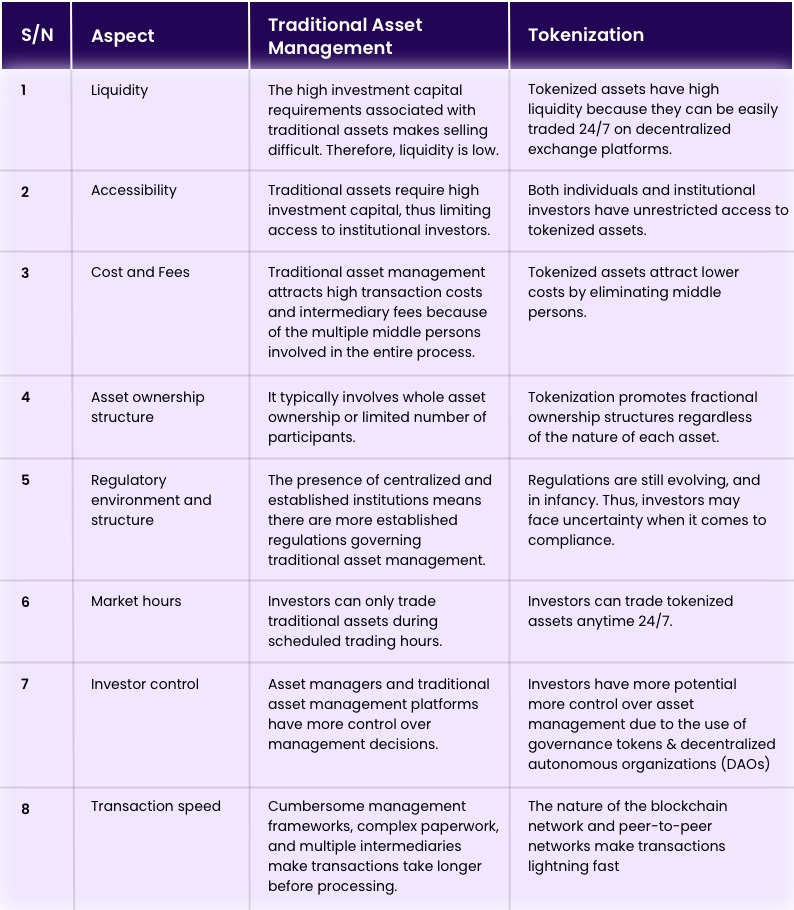Table of Contents
Home / Blog / Tokenization
Tokenization vs Traditional Asset Management: Key Differences
February 4, 2025

February 4, 2025
Understanding the distinction between tokenization vs traditional asset management is very crucial for any investor preparing to dive into the market or investment platforms looking to attract investors. Both play vital roles in creating wealth for investors, but they take different approaches, and therefore have varying nuances that may affect investment approaches and ultimately return potential.
In this complete beginner’s guide, we compare tokenization vs traditional asset management. We discuss the meaning of both terms and highlight both their benefits, potential challenges and shortcomings. Finally, we place them side by side and point out the key differences between both asset management approaches.
Without further ado:
What is Tokenization?
Although there is no universally-accepted definition of tokenization, the term has recently become a perfect example of the process of representing, recording, and trading real-world assets on a programmable platform, such as a blockchain. More generally, CRS Reports show that it represents a form of digitized finance concerned with storing, recording, and transacting traditional financial assets and real-world assets on the blockchain.
In converting physical assets into digital tokens, each digital token represents an ownership unit, representation, or share of the physical asset. As such their movement and transfer can be monitored due to the immutable nature of the distributed ledger technology of the blockchain.
Financial assets that can be tokenized range across a number of examples such as:
- Real estate assets
- Securities
- Bank deposits
- Private equities
- Debt
- Funds
Regardless of the nature of the asset class, the fact that transactions on public blockchains are real-time and final present some improvements over traditional asset management and payment processes.
Related Read: Explore in Detail What is Tokenization?
Let’s examine some of these advantages below:
Benefits of Tokenization for Asset Management

When you compare tokenization vs traditional asset management, the nature of the blockchain and distributed ledger technologies confer some advantages on tokenization compared to traditional asset management processes. Some of them include:
1. Faster Transaction Times
Asset management is faster with tokenization.
The decentralized ledger system of blockchain technology facilitates peer-to-peer transactions when tokenization is used for asset management. This eliminates the need for intermediaries which slows down transactions involved in investing or divesting in assets.
Furthermore, the use of smart contracts helps to pre-program multi-part transactions, which often take several days to complete, to happen all at once.
2. Cost Savings
Introducing tokenization into asset management also reduces the high cost (in the form of transaction fees). This is possible because it eliminates intermediaries like banks, investment firms, and brokers from the asset management process, thus making it cheaper to execute trades or transfer assets.
3. Improved Efficiency
Efficiency is naturally a by-product of the first two benefits. Less parties and costs are involved in the entire asset management process. Therefore, investors and asset issuers can get more done with less resources.
4. Greater Accessibility and Democratization of Investment
Investments in high value assets can be quite limited to institutional investors only due to the huge capital requirements of certain asset classes. However, by enabling fractional ownership, tokenization gives small scale and retail investors an opportunity to invest in high-value assets with lesser capital.
The same thing applies, even for physical asset classes like art and collectibles. Tokenization helps to disaggregate ownership of such indivisible objects or asset classes.
5. Enhanced Security
Security is also an inherent benefit of blockchain technology. Leveraging this benefit for asset management means that asset investors have an extra layer of protection against fraud, unauthorized access,
Furthermore, the immutable nature of distributed ledger technology maintains a perfect record of all asset financials, providing a significant advantage over the paper-based nature of traditional asset management. Consequently, there’s a greater level of trust throughout the investment process.
6. Increased Liquidity
The fact that tokenization divides whole assets into smaller shares, a term known as fractionalization, potentially increases the liquidity of certain illiquid assets. More people have investment access, thus making it easy for other investors to convert their shares to cash. The efficiency, cost savings, and faster transaction times also makes the title transfer process quicker, further increasing liquidity in asset management.
Explore More Tokenization Benefits
From diversification and cost reduction to fractional ownership opportunities and enhanced liquidity, there’s so much to gain from tokenization.
Potential Drawbacks of Tokenization for Asset Management
Despite the juicy benefits outlined above, tokenization still has some potential disadvantages for asset management. Some of them include:
1. Market Adoption and Scalability
To many skeptical traditional institutional investors, the potential benefits associated with tokenized real world assets are theoretically sound at best. The fact that tokenization largely depends on public crypto infrastructure also raises concerns about its ability to provide affordable financial services at scale. Finally, many established and regulated financial institutions are already providing the same services tokenization promises.
All these factors combine to impede the widespread adoption of tokenization as a trustworthy asset management approach. Consequently, tokenization adoption is quite still in its infancy.
2. Regulatory and Legal Uncertainty
So many questions surround the legitimacy and regulatory standing of tokenized assets.
At the basic level, some investors wonder if they’re even legal. And if they are, are they regulated by existing regulatory frameworks? Do regulatory bodies need to make provisions for a new asset class or consider them as part of the existing asset classes?
These, and many more questions underline the lack of clarity surrounding the legal standing of tokenized assets across different jurisdictions.
These uncertainties somewhat contribute to the reluctance in widespread adoption and scalability of tokenization of real world assets.
3. Interoperability Concerns
The ability to use different tokenized real world assets automatically regardless of geographical location or sources is another concern plaguing tokenization. Many tokenization projects may either be built on popular blockchains like Bitcoin and Ethereum or on other less-popular or even custom blockchains. And herein lies the problem because most of these blockchains are not usually interoperable, thus implying that tokenized assets on one blockchain may be incompatible with other blockchain platforms.
In a way, this issue is both caused and responsible for the low adoption of tokenization. With clear regulatory frameworks, there is a possibility for standardization. On the other hand, interoperability concerns may also hinder adoption.
4. Technical Complexity
Both investors and asset management companies might struggle with the technical complexities of blockchain technology and different asset classes. This is because tokenization requires an in-depth understanding of both these factors as well as solid technological infrastructure for implementation.
5. Valuation and Pricing
Tokenization of assets also experiences some difficulties in establishing fair pricing mechanisms. In simple terms, it is quite difficult to accurately determine the fair price of each digital token representing a share of a real world asset and also ensure that the sum of the ascribed value for all tokens equals the total value of the real world asset.
What is Traditional Asset Management?
Traditional asset management refers to the practice of buying, selling, and managing financial assets and investments through centralized platforms like banks, investment firms, and insurance companies. The purpose of this process is majorly to maximize the value of an investment portfolio over time. It involves traditional asset classes such as stocks, bonds, real estates, savings, loans, and commodities.
Traditional asset management processes are usually executed by asset managers who have a fiduciary responsibility to act in the best interests of their clients to mitigate risks and maximize profit. These clients range from individuals and corporations to government entities and corporations. As a compensation for their services, asset managers often charge an industry average of up to 1% for portfolio sizes that are up to $1 million, and lesser percentages for smaller investment portfolios.
Benefits of Traditional Asset Management

The practise of managing assets via centralized financial institutions can be beneficial to investors and other stakeholders in the following ways:
1. Compliance and Transparency
The fact that centralized financial institutions and asset managers have been in existence longer than tokenization platforms gives them an edge in terms of compliance and transparency. Their frameworks already align with regulatory standards and compliance frameworks.
Therefore, many investors value this transparent and stable structure compared to the rather new system that tokenization introduces.
2. Risk Mitigation
As mentioned earlier, asset managers, through centralized financial institutions, are often in charge of traditional asset management processes. So, they already have tested and trusted frameworks for monitoring and analyzing investment opportunities carefully. Consequently, they identify risks early and reduce their potential exposure to market volatility and other financial uncertainties.
3. Sustainability
Due to the established frameworks and standardized processes associated with traditional asset management, investors tend to enjoy a longer lifespan of asset portfolios. This sustainability can be ascribed to the regular maintenance and strategic upgrades that are put in place by asset managers and the traditional systems they operate with.
More so, traditional asset management has been in existence for as long as the assets themselves, and may likely continue to do so.
4. Better Decision Making
From asset managers to any of the multiple intermediaries involved in the traditional asset management process, all major players provide valuable insights that guide investment decisions. Furthermore, the traditional frameworks and systems encompass data analysis and reporting– two major processes that help investors make better choices.
Shortcomings of Traditional Asset Management
Although the agelong traditional approach to asset management has helped different individuals increase wealth significantly over time, there are some shortcomings that reveal rooms for improvement. Some of these include:
1. High Market Volatility
Despite the centralized and stable frameworks governing traditional asset management practices, we often see significant and quick changes in asset value over short periods. This occurrence is often due to several reasons such as market sentiments, political and economic factors, as well as other industry-specific and sector factors.
Consequently, this high volatility exposes investment portfolios to greater risks, thus making diversification very difficult. Furthermore, investor sentiments also lead to emotional decision making characterised by both unwarranted panic and blind optimism. These features make traditional asset management difficult to navigate.
2. Low Return Potential of Some Traditional Assets
Traditional asset management practices often have established frameworks and “safety nets” for mitigating some risks like high market volatility described above. These frameworks often limit investors to safer investments like bonds, savings accounts, and certificates of deposits.
While these can indeed be safe, they often do not yield high investment returns because the central banks usually lower interest rates to battle economic conditions. For the investor, this translates to diminished earnings, thus, defeating the purpose of investment in the first place.
3. Inaccessibility Due to High Barrier of Entry
Traditional asset management usually caters to institutional investors with huge investment capital majorly. This is obvious from the asset classes such as real estate, securities, stocks, and bonds, which traditional asset management covers. Most of these investments require investors to have millions of U.S. dollars to get a buy-in.
The issue with this is that individual, retail, and small scale investors with smaller capital can’t get a seat at the table even if they wish. This inaccessibility creates a supply-demand gap which tokenization is trying to close by democratizing access.
4. High Fees and Intermediary Costs
Asset managers, brokers, brokerage firms, banks, and investment companies are all different examples of middle persons that investors have to go through when considering traditional asset management. All these entities either charge flat fees or commissions for rendering their investment services, and these fees can be quite exorbitant, thus reducing the investor’s net returns.
Furthermore, the complex and huge fee structure may also cause asset managers to be more interested in their commissions and fees than the investor’s best interests.
5. Geographical Limitations
The standardized nature of traditional asset management often restricts investors to only local or national markets, thus effectively limiting them from investments with higher return potential.
Regulatory barriers are one of the major reasons for these restrictions because investing across borders necessitates abiding with different complex regulatory environments. And local managers may lack the insights necessary to execute these effectively.
Tokenization vs. Traditional Asset Management: Key Differences
Based on their unique peculiarities, benefits, and shortcomings, tokenization and traditional asset management contrast sharply in a number of aspects. Their differences are summarized in the table below:

Tokenize Your Real World Asset With Debut Infotech
Converting your physical properties to secure digital tokens can help you attract more than enough investors.
Conclusion
Both traditional asset management and tokenization have proven their potential to generate wealth for investors. However, when you compare tokenization vs traditional asset management, you notice that each asset management approach provides some unique advantages over the other.
For example traditional asset management offers a much stable regulatory compliance framework due to its established and centralized frameworks. However, the times are changing and many industry leaders are tipping tokenization to be the future of financial asset management. From democratization and accessibility to greater cost efficiency due to elimination of intermediaries, it is clear that tokenization has a lot to offer the average investor.
That’s why every real estate tokenization platform worth its salt is taking advantage of the blockchain technology to improve investment potential for different organizations.
The future is indeed now!
Frequently Asked Questions (FAQs)
While a tokenized asset is a digital representation of a physical or financial item on a blockchain, a digital asset is any asset existing in the digital form such as cryptocurrencies or digital files. Tokenized assets enable fractional ownership and exchange of real world assets while digital assets do not represent ownership at all.
Tokenization of traditional assets is the process of transforming physical or financial asset ownership rights into blockchain-based digital tokens. This allows for fractional ownership, increases liquidity, and simplifies asset trading and management, making them more accessible to both institutional investors, small-scale, and retail investors while maintaining transaction transparency and security.
Tokenization in asset management means transforming real-world asset ownership rights into blockchain-based digital tokens. This allows for fractional ownership, which improves liquidity and accessibility while also enabling direct peer-to-peer trading without intermediaries. Tokenization also improves transparency and security in asset transactions, transforming traditional investment strategies.
Real estate is one example of a tokenized asset. Real estate tokenization platforms allow investors to purchase fractional ownership of buildings. This allows for higher-value investments with lower capital needs, democratizing real estate investment opportunities and increasing market liquidity.
The difference between tokenization and digitization lies in the fact that digitization involves converting physical assets to a digital format for easier management and access. On the other hand, tokenization goes a step further by creating a digital token on a blockchain that represents ownership or rights to the asset, allowing for features such as fractional ownership and increased liquidity.
Talk With Our Expert
Our Latest Insights
USA
2102 Linden LN, Palatine, IL 60067
+1-703-537-5009
[email protected]
UK
Debut Infotech Pvt Ltd
7 Pound Close, Yarnton, Oxfordshire, OX51QG
+44-770-304-0079
[email protected]
Canada
Debut Infotech Pvt Ltd
326 Parkvale Drive, Kitchener, ON N2R1Y7
+1-703-537-5009
[email protected]
INDIA
Debut Infotech Pvt Ltd
C-204, Ground floor, Industrial Area Phase 8B, Mohali, PB 160055
9888402396
[email protected]




Leave a Comment